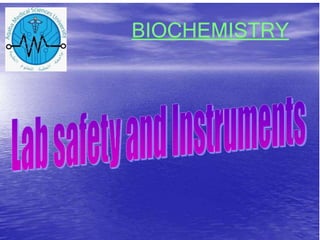The document provides safety rules and guidelines for conducting experiments in a biochemistry laboratory. It outlines general safety rules regarding protective equipment, chemical handling, glassware use, heating procedures, and first aid. It also describes the proper use of common laboratory instruments such as pipettes, pH meters, spectrophotometers, and centrifuges. The Beer-Lambert law relating absorbance, concentration, and path length is also defined.










































